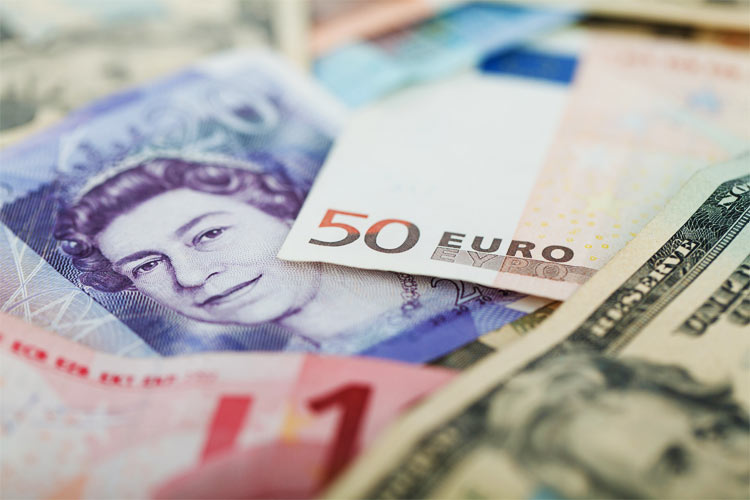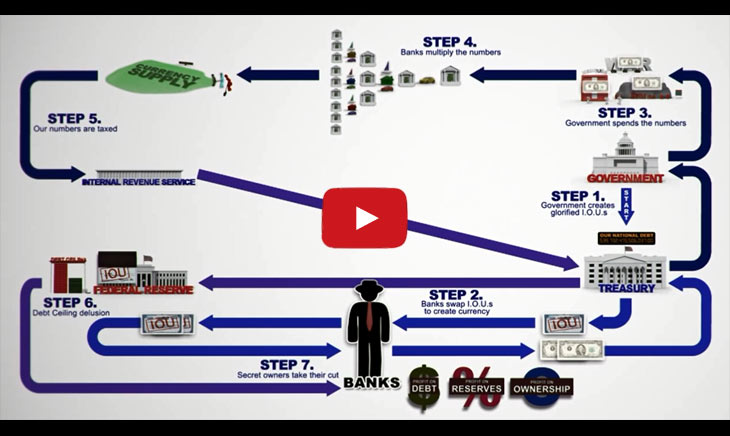What is the Most Valuable Fiat Currency in the World Today?
What makes a currency strong isn’t necessarily what makes it popular or valuable, as you’re about to read. In fact, the most popular form of currency, the USD is steeped in debt with nearly 17.5 billion owed by the nation’s government (source). Furthermore, the current capital to assets ratio (Capital Ratio) of the US Federal Reserve is a slowly improving 11.3%. Not the best numbers, but far from the worst either.
So mull those numbers over while you read the rest of this. Do you think the USD is still on top?
A fiat currency (what is it, anyway?) a.k.a. paper currency’s value and more importantly, its strength is determined by its capital assets in comparison to its liabilities. Assets include all government holdings. To keep it simple, think of liabilities in terms of all country’s paper currency in circulation, and their outstanding debt/obligations added together.
Let’s first look at the definition of a Capital Ratio using the K.I.S.S. principal.
Capital to Assets Ratio Explained
In order for a currency to be strong, the centralized bank which issues the currency (e.g., Federal Reserve in the US) must have more, and in fact a substantial amount more, assets than it does liabilities. That’s it really. If you have more collateral than you do printed currency, debt, and other financial obligations, you have a positive Capital Ratio. The more positive (higher) the number, the stronger the currency.
To explain it just a bit further, we all use the Fiat system, and for the most part each dollar printed is nothing more than a piece of paper – a promise from the central bank that the assets which back the note do exist.
There is a certain level of expectation among all of us who possess each of those dollars that it will always hold some intrinsic value. A belief that we can buy a chocolate bar that costs $1 now, and that we can purchase that same chocolate bar (forget about inflation here for a second) in two years time.
Essentially, the Capital Ratio tells us what sort of cushion that currency reserve has in place in the event of a financial crisis. For instance: if a debt is called upon, or war erupts.
How the top dogs measure up and who really has the most valuable currency?
It should already be clear after learning how a central bank’s CR determines how stable their currency will be – that the current value of a USD, Yen, Euro, peso, Krone, franc, won, or dong, etc. – doesn’t necessarily equal strength and longevity.
Check out the World Bank’s current numbers to compare/contrast each central bank and their true dollar value based on Capital Ratio and other factors: data.worldbank.org/indicator/FB.BNK.CAPA.ZS
Which fiat currency is most valuable is a loaded question, and one that you’ll find very few experts agreeing on. Some sources claim that the Euro is – yet that’s rather preposterous given the country is (at last count) over 11 trillion (USD) in debt.
Another source claims the Singapore dollar is the best, due to a healthy Capital Ratio (8.5%) and zero debt as of the end of 2013. But does it really have any value in the world market with such low trading frequency?
The truth, you ask?
Of course, it’s still the US dollar.
The USD has a percentage of foreign trade set at 90%. Anyone that tells you that the debt-ridden Euro is king or the Japanese Yen is going to take over soon is just missing the point.
The USD still remains the most popular and resilient currency on the planet. Look how it started to bounce back at the end of 2013, despite all the nay-sayers who said it was on its way to the rubbish pile, never to be resurrected.
It continues to climb despite much negative speculation, and the next most-traded fiat currency in the world, the almighty Euro (percentage of foreign trade 37%) pales in comparison; particularly when looking at their staggering debt numbers. The Yen, currently third for foreign-traded currency (percentage of foreign trade 20%) has a lot of catching up to do in order to get in the race.
The US will never be rid of their debt, but the USD isn’t likely to be pushed from its perch at the top of the heap anytime soon either – unless…
Takeaway
I’m not keen on fiat currencies – not a single one of them is fail-proof, and there are good chances that all of them will fail, anyway. However, I personally interested in learning more about the Norwegian Krone, as it’s gaining ground as a strong contender to Euro, even US Dollar.

photo credit: ExchangeRateCalculator.com
According to Zero Hedge, Norway’s central bank has among the highest capital ratios of any others in the world – at 23.3%.
Although Norwegian Krone is not the strongest, it’s certainly the safest of all. I might want to exchange my US Dollar with Norwegian Krone, but I need to learn more about this – I’ll keep you posted!
So, how about you: Will you keep on holding your US Dollar and Euro notes or are you going to consider Singapore Dollar, even Norwegian Krone? Are you going to hold on to your fiat currencies or are you going to go for precious metals, for example? Please tell us what you think…
Extra Reading:
http://www.toptenstip.com/top-10-strongest-currencies-in-the-world/
http://www.currencytrading.net/features/50-factors-that-affect-the-value-of-the-us-dollar/
http://money.howstuffworks.com/currency7.htm
http://www.huffingtonpost.com/2013/07/22/eurozone-debt-burden-all-time-high_n_3634093.html


